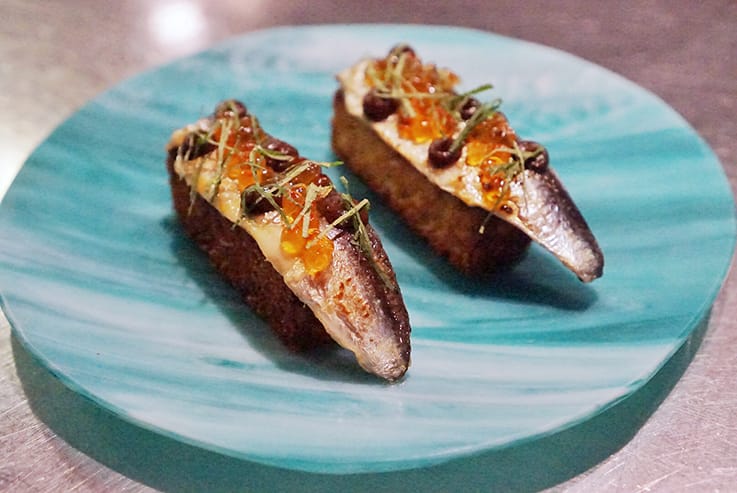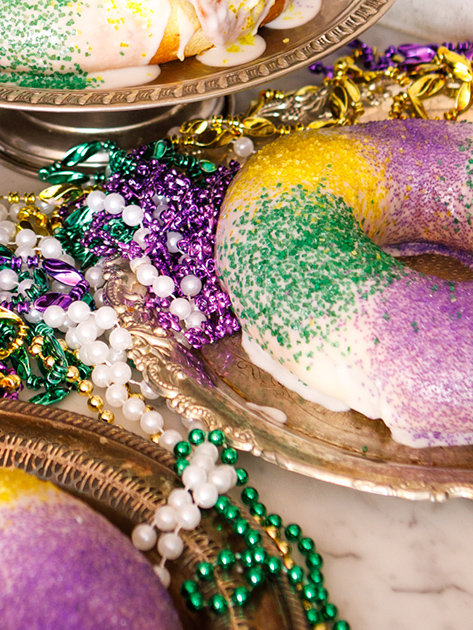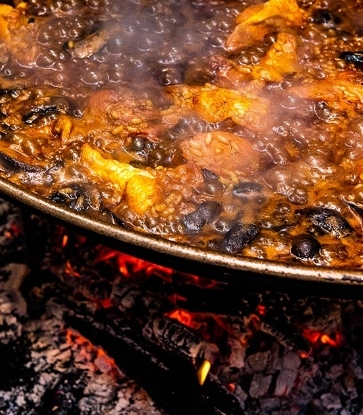Fans of little fish know how their dense flavor and toothsome texture can transform a recipe, whether as an umami-boosting sauce ingredient or the star of the show. Sardines have been a favorite to play with as of late because they work with a variety of different cuisines and flavor pairings. But there are a lot of factors to consider when buying, cleaning and cooking sardines, so we turned to two expert chefs—James Kelly of Lupa and George Mendes of now-defunct One Star Aldea, both in New York City—for advice. Check our their tips on how to cook sardines at home and try your hand at something new this season.
Where to Buy Sardines
Just like when sourcing any meat or fish, shopping for quality sardines is a more pleasant experience when you know where to look. If you have a trusted fishmonger, check to see if they carry the small fish on a regular basis. If not, they’ll likely be able to order them if you put in a special request.If you’re not loyal to a particular fish purveyor, visit your local specialty food shops. “I suggest going to Eataly for sardines in the larger cities,” Kelly says. “You always want to make sure you're getting European varieties, so any Italian or Mediterranean market in smaller towns will do.” Mendes’s favorite suppliers are The Lobster Place inside New York City’s Chelsea Market and local grocery chain Citarella.
Which Kind of Sardines to Buy
Like with anchovies and other types of small fish, you can purchase sardines fresh, cured in oil or packed in salt. Each type has it merits, and different dishes can benefit from varying preparations. When cooking in the Lupa kitchen, Kelly prefers oil-packed or cured sardines. “I tend to use Mediterranean sardines because I cook Italian food, and they have extra briney flavors that are less salty but still fresh and acidic,” he says. Cured sardines perfectly complement fresh pasta, especially when prepared with a robust garlic and olive oil sauce.Mendes prefers to buy fresh sardines and cure them himself in a simple mix of olive oil and Sherry vinegar. But he explains that salt-packed sardines have their merits, too. “Salt-packed sardines have a deeper and ‘rustic’ flavor that goes well with salads and vegetable combinations,” he says. They are great served atop a homemade Caesar salad or mixed with quick-pickled veggies and piled high on a toasted baguette.
If you want to cook fresh sardines, simply dress them with olive oil and season with salt and pepper. Grill them for a minute or two on each side, drizzle fresh lemon juice over top and serve them with a sprinkling of fresh herbs.

How to Debone Sardines
When preparing your sardines on the grill, it’s fairly easy to debone them by hand after they’ve finished cooking. But to remove the bones first prior to cooking, Kelly starts by cutting around the collar of the fish with a boning knife. “Then follow the center bone down the fish towards the tail,” he says. “From there, flip the fish over and repeat the same process. After you have your two fillets, trim the fins from the fillets on the top and bottom portion of the fish.”If you’re familiar with deboning salmon, Mendes suggests using the same technique with a smaller knife. “Lay the sardine flat on a cutting board with the head pointing right.” he says. “Position the knife tip just behind the gills and press light to cut through onto the vertebrae. Then twist the knife and slide along the bone towards the tail.”
What to Eat with Sardines
If you’re already acquainted with the flavor and texture of sardines, feel free to experiment with the ingredients that speak to you. But if you’re in need of some inspiration, Kelly likes to pair them with bright, citrusy and spicy sauces to cut through their salty flavor and oily texture. “They're also great in pasta with caramelized fennel, pine nuts and dried currants,” he says.Mendes loves pairing sardines with baby lettuces dressed in a citrus vinaigrette. But they are also a great way to add punch to charred peppers and other vegetables.
However you choose to serve them, sardines are easier to cook with than they look and should earn a place in your home cooking rotation this season.




















